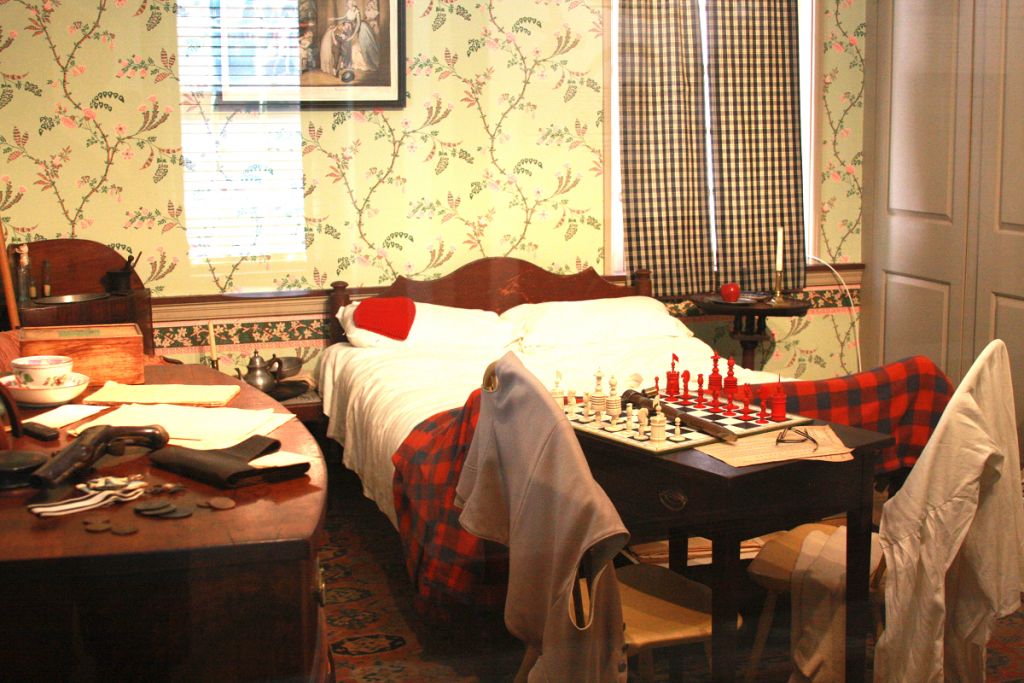June 4, 2022 @ 12:00 EDT
Site Visit #36
As I visit these many National Park sites, I am often amazed at learning of the history and people of whom we were not taught in school. And I attended school in the pre-politically correct days before revisionist history was introduced!
Ask most people on the street, and they will recognize the name George Washington. They may also recognize Thomas Jefferson, John Adams, and Benedict Arnold. The more astute will know Nathanial Greene, Ethan Allen, and John Paul Jones. But I suspect only those with a master’s degree in history will know Thaddeus Kosciuszko (roughly pronounced Kaws-shoos-ko). Those and anyone who visits the Park Service’s smallest unit: Thaddeus Kosciuszko National Memorial in Philadelphia.
Thaddeus was born in what is now Poland, but at that time was occupied by Russia. He was an idealist in some ways, dreaming of a free Poland. When he heard of these colonies of Great Britain declaring themselves independent, he decided to come and try to contribute to the cause. He had been trained as an engineer, and quickly proved himself at designing and constructing fortifications for the Continental Army. He was also very astute at recognizing natural defensive positions. At Ticonderoga, he immediately recognized the best high ground and told commanders to get artillery on them. The commanders disagreed and did not secure the hill. The British did take it, place artillery on it, and routed the American army to capture Fort Ticonderoga.
Stinging from the defeat, the army looked to defend Saratoga, the next British objective. This time, they allowed Kosciuszko to design and build the defense – and the Continental Army won a huge victory, capturing thousands of British soldiers. Thaddeus eventually met with George Washington, who praised his efforts. He continued his work, now in the southern theater until the war’s end.
So inspired by the success of the American revolution, he went back to Poland and led an uprising against Russia. He even drafted a document similar to the Declaration of Independence, citing wrongs he felt had been committed by Catherine the Great. Unfortunately, his revolution failed and he was captured and imprisoned. Following Catherine’s death, the new czar released Kosciuszko but also exiled him from his native Poland.
Eventually, Thaddeus returned to Philadelphia where he was warmly welcomed by the citizens. He was visited by Jefferson, who had become a close friend, and other “big names” in early American politics. During his time in Philadelphia, he rented a small room in a house on the corner of 3rd and Pine. It is this house that now stands as a National Memorial to Kosciuszko.

The Park Service owns not only the house in which Thaddeus stayed but the neighboring house, allowing for a little bit of space! One enters the house to a small room with a ranger desk, where the ranger will explain the layout of the site. Go up some stairs bringing us to Thaddeus’ room, which is fully furnished and protected by a glass wall. Passing through a door next to his room brings one into a small theater (actually just a room with some chairs and a TV/DVD up front. A short movie about Kosciuszko is available in both English and Polish.
Back down the stairs, to view a few exhibits that mostly repeat the information in the movie. It’s a short visit but yet a very educational one. Thomas Jefferson referred to Kozciuszko as “the purest son of Liberty” saying he would be remembered forever. Sadly, he was not but for one National Park site.
Steve